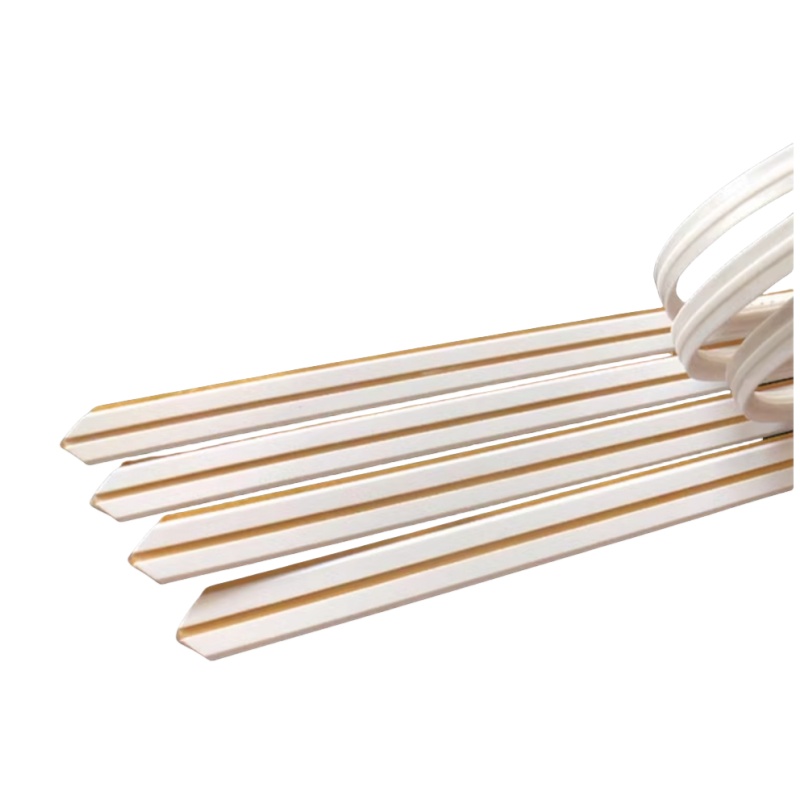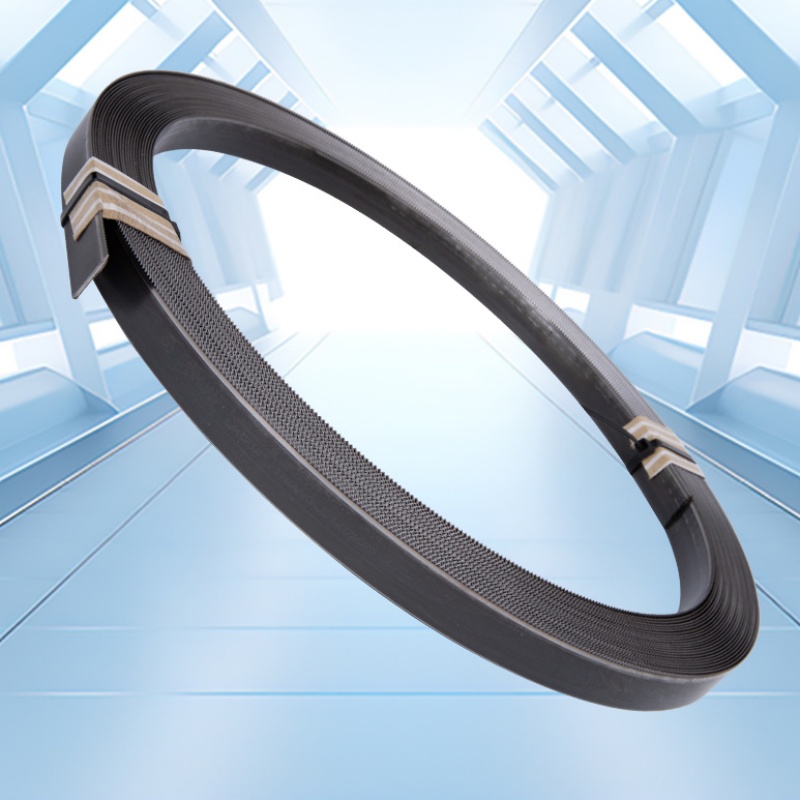
Precision steel crafting methods fulfill a major duty towards crafting first-rate modules within a diverse range of industries. These alloys showcase remarkable resilience, helping them to bear extreme burdens involved in processing systems. From transportation components to electronics apparatus, rule die steel maintains its usage in a varied of sectors.
- Heavy Equipment assemblies: Rule die steel is indispensable for crafting robust and sharp parts such as cylinders, connectors and supports.
- Biomedical devices: The fine detail and hardiness of rule die steel make it advantageously appropriate for manufacturing precise surgical instruments.
- Tooling: Rule die steel acts as the backbone of reliable tooling and molds used in various manufacturing processes, ensuring uniform product deliverables.
Carefulness Cutting Rules for Meticulous Sheet Metal Fabrication
Reaching precision in sheet metal fabrication entails detailed attention to specifics, particularly when it comes to trimming. Exploiting the right cutting rules is fundamental to maintaining exact and steady results. First and foremost, selecting the appropriate cutting method for your material thickness and desired edge quality is necessary. Options include oxy-fuel cutting, each with its own pros. Subsequently, understanding material properties like tensile strength, ductility, and hardness can help prevent warping or damage during the cutting process. Always utilize a material's datasheet for exhaustive guidelines on safe cutting practices.
- Likewise, maintaining sharp cutting tools is crucial for neat cuts and preventing stress on the sheet metal.
- Temperature stabilization the material can reduce thermal stress and improve cut quality in thicker materials.
- Conclusively, post-processing steps like deburring and edge finishing are fundamental for producing a professional and functional product.
Understanding Punch and Die Construction
Punch and die construction is a significant aspect of the metal stamping process. These tools shape metal sheets into various fragments by applying accurate pressure. The design and construction of punches and dies considerably influence the standard of the stamped items. A well-constructed punch generally features a hardened steel tip to withstand repeated force, while the die works with this force with a precisely machined cavity. The connection between these two elements protects the consistent transfer of shape and magnitude to the metal sheet. The intricacy of punch and die construction can alter based on the concrete requirements of the stamping application. Considerations such as the material thickness, shape complexity, and production volume jointly play a role in determining the framework of the tools. Understanding these fundamental principles of punch and die construction is essential for anyone involved in the metal stamping industry. From technicians to operators, a solid grasp of this subject can promote to increased efficiency, product quality, and overall success.Creasing Matrices: Enhancing Folding Accuracy
When it comes to achieving precise creasing in the realm of fabrication and material processing, creasing matrices emerge as a important element. These specialized tools, often crafted from rigid materials like steel, are strategically designed to impart distinct creases into sheets or substrates. By exerting controlled pressure at specific points along the material's surface, creasing matrices effectively establish fold lines that guide subsequent bending operations. This pre-creasing process substantially enhances folding accuracy, resulting in more steady and symmetrical final products.
- The precise nature of creasing matrices allows for the production of delicate folds and designs.
- They can be customized to accommodate a wide range of material thicknesses and properties.
- Creasing matrices play a vital role in industries such as paper manufacturing, cardboard packaging, and printed circuit board fabrication.
Cutting-Edge Rule Die Steel for Automotive Industry
The vehicle sector is continuously seeking materials that can withstand the rigorous conditions of manufacturing and performance. Specifically, high-speed rule die steel has emerged as a significant part due to its exceptional aspects. This blend exhibits distinguished hardness, wear resistance, and toughness, making it ideal for producing intricate automotive parts.
- Likewise, its ability to maintain these properties at elevated temperatures aids efficient production processes.
- Employments of high-speed rule die steel in the automotive industry are wide-ranging.
- Cases include cutting tools, molds for plastic components, and dies used in sheet metal stamping.
Optimizing Rule Die Steel Hardness for Cutting Performance
Realizing optimal cutting performance with rule die steel hinges on carefully identifying the appropriate hardness level. A trade-off between hardness and ductility is crucial to ensure both acuteness of the cutting edge and resistance to damage. Firm steels can withstand increased cutting forces and resist deformation, leading to longer tool life. However, excessively hard steels may become brittle and prone to cracking, compromising the integrity of the cutting process.
- Determinants like material being cut, cutting speed, and feed rate all influence the ideal hardness range.
- Employing tempering can effectively modify the hardness of rule die steel.
Understanding the relationship between hardness and cutting performance allows for enhancement of tool life, surface finish, and overall cutting efficiency.
Material-Based Punch Design Insights
When designing punches for material fabrication, several vital considerations must be taken into account. The type of material being punched significantly influences the punch design. For instance, tough materials like steel require punches with precise edges to effectively penetrate and deform the material. Conversely, flexible materials like aluminum can be punched with punches featuring smoother geometries to minimize edge damage and ensure clean cuts. Also, factors such as the material's density also play a role in punch design. Thicker materials often necessitate larger punch diameters and increased strength for successful piercing. Understanding the material's composition is essential to select an appropriate punch material and geometry that ensures optimal performance and minimizes tool wear. Ultimately, a well-designed punch should effectively cut the material while minimizing deformation, damage, and tooling wear.Tool Revitalization of Cutting Dies
Maintaining cutting dies in peak condition is critical for ensuring accurate and efficient die-cutting operations. Over time, the cutting edges of dies can become dull or damaged, leading to inconsistent cuts, material scrap, and increased production costs. To maximize die lifespan and optimize cutting performance, it's imperative to follow a regular sharpening and maintenance schedule.
- Regularly inspect cutting edges for signs of wear, such as chipping or rounding.
- Leverage specialized sharpening tools designed for die-cutting applications.
- Clean dies carefully after each use to remove debris and prevent rust buildup.
- Store dies in a clean, dry environment when not in use to protect them from corrosion.
By adhering to these best practices, you can extend the life of your cutting dies and preserve consistent, high-quality die-cutting results.
Selecting Rule Die Steel by Application
When determining rule die steel, consider its function. Various types of rule die steel thrive in different applications due to their unique traits. For example, high-carbon steel is advantageous for long-lasting rule dies used in demanding applications like construction production. On the other hand, tool steels with specialized elements are often utilized when service life is paramount.
- Consult a reputable rule die steel merchant to select the best type for your specific needs.
- Criteria like tool geometry, production volume, and material being processed all influence the ideal rule die steel optioning.
Take into account that proper servicing and lubrication can significantly enhance the lifespan of your rule die steel, regardless of its version.
Careful Creasing Matrix for Packaging Applications
In the realm of innovative packaging design, precision is essential. A high-quality creasing matrix plays a vital task in ensuring clean, well-formed creases that enhance the appearance of packaged products. These matrices are meticulously constructed from durable materials like steel or carbide, and they come in various configurations to accommodate diverse packaging expectations.
The fineness of a creasing matrix directly impacts the finish of the finished package. A well-maintained creasing tool matrix will result in seamless creases that not only refine the product's visual presentation but also contribute to its durability.
- Variables to consider when choosing a creasing matrix include the component of the packaging, the required depth, and the magnitude of production.
- Scheduled maintenance of the creasing matrix is essential to safeguard its accuracy and prolong its life.
- Directing in a high-quality creasing matrix can be a wise decision for any packaging operation, as it contributes to the productivity of the production process and enhances the overall benefit of the finished product.
Case Studies: Successful Implementation of Rule Die Steel Adopt
A compelling array of case studies showcase the remarkable efficacy of rule die steel across diverse industrial applications. From the demanding realm of automotive manufacturing to the intricate world of electronics production, these real-world examples manifest the transformative power of this advanced material. Groups have leveraged rule die steel to achieve considerable improvements in product quality, assembly efficiency, and overall business resilience.
- One notable case study centers on a leading foundry of aerospace components, where the implementation of rule die steel yielded a pronounced reduction in part defects and an enhanced production cycle time.
- In another instance, a renowned electronics manufacturer effectively implemented rule die steel to fabricate intricate circuit boards with unprecedented precision and accuracy, resulting in a notable improvement in product reliability.
These case studies provide irrefutable evidence of the adaptability of rule die steel as a solution for addressing the increasingly demanding requirements of modern industries.
